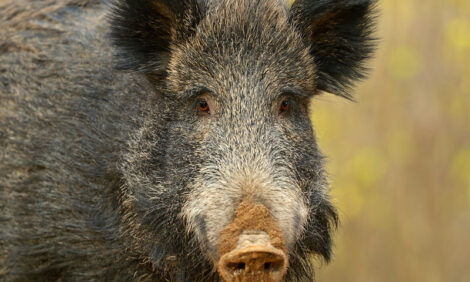



Livestock and Products Production Update 2004 - Vietnam
VIETNAM - This is the latest Livestock and Products report by the Foreign Agriculture Service, looking at the swine industry in Vietnam.Pork production
The swine/pork sector receives the most attention (and funds) in MARD’s plans. Vietnam’s hog
to lean pork meat ratio has increased from 40-42% in 1996-2000 to about 45 percent today. This
yield improvement is due to use of more hybrids and exotic swine breeding stock, and use of
better quality feeds. Because of the Government’s animal breeding program, the ratio of hybrid
and exotic swine to lower-yielding traditional breeds has increased to 70-80%, much higher than
that level of 50-60% in 1996. The Feed Conversion Rate (FCR – kilograms of feed to produce one
kg of hog live weight) has also improved from 3.5-3.8 in 1996 to about 3.0-3.2 in 2003.
Vietnam’s 2003 pork production is estimated at 1,795 tmt (live weight), 8.5% higher than 2002’s
production (see Table 4) due to higher hog numbers and higher average slaughter weights. Pork is
the most important animal protein source in the Vietnamese diet. Pork is mainly consumed as
fresh (straight from the market) meat, as processed pork (canned meat or prepared sausages) or
imported pork products (canned hams) are not widely available in Vietnam.
Domestic pork prices
Exchange rate: Vietnamese Dong (VND) 15,700 equal to $1 as of Feb. 3, 2004
In 2003, domestic pork prices decreased in both Northern and Southern provinces as production
expanded, exports slowed, and consumption did not increase as quickly as expected. In late
2003, pork prices (live weight) were quoted at VND 10,500-12,500 / kg in Northern provinces
and VND 11,000-12,500/kg in Southern provinces (see Table 4). Pork farmers were complaining
as the break-even threshold price is estimated at VND 11,000/kg; most farmers only have profits
if the price is over VND 13,000/kg.
Monthly Swine Prices (live weight). Unit: VND/kg

Source: MARD
Further Information
To view the full report, please click here (PDF Format).
Source: USDA Foreign Agricultural Service - 5th February 2004








